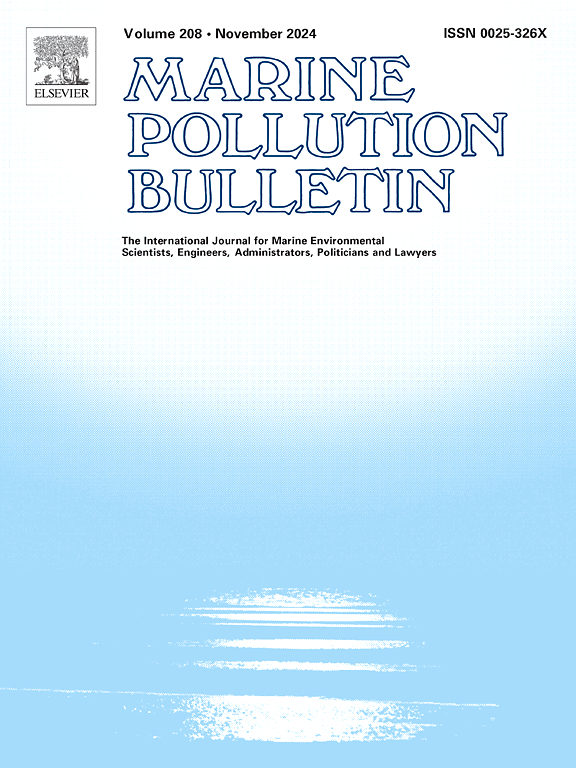黄海胶州湾热浪和生态系统响应的长期趋势。
IF 4.9
3区 环境科学与生态学
Q1 ENVIRONMENTAL SCIENCES
引用次数: 0
摘要
随着全球变暖,极端天气频频出现,但其后果仍有待探索。根据胶州湾 1954 年至 2022 年的气温数据集,共探测到 156 次热浪及其特征。热浪次数增量为 0.62 次/10 年-1,参与热浪日数总和为 6.65 天/10 年-1,每次热浪持续时间为 0.66 天。热浪强度呈规律性波动,持续时间逐渐缩短。根据 2003 年至 2022 年江浙沪 12 个站位的数据集,热浪期间浮游动物的丰度显著增加,这主要归因于热浪期间桡足类和胶状浮游动物的丰度增加。然而,浮游生物对热浪的反应具有季节差异性。我们的研究为了解热浪对近海浮游生物生态系统的影响提供了新的视角和科学依据。本文章由计算机程序翻译,如有差异,请以英文原文为准。

Long-term trends of heat waves and ecosystem responses in Jiaozhou Bay, the Yellow Sea
With global warming, extreme weather frequently occurs, yet the consequences remain unexplored. A total of 156 heat waves and their characteristics were detected on the basis of a temperature dataset from 1954 to 2022 in Jiaozhou Bay (JZB). The increment is 0.62 times decade−1 for the number of heat waves, 6.65 days decade−1 for the sum of participating heat wave days and 0.66 days for the duration of each heat wave. The intensity of heat waves showed regular fluctuations with progressively shorter periods. Based on the dataset of 12 stations in JZB from 2003 to 2022, the zooplankton abundance was significantly greater during heat waves, which was strongly attributed to the greater abundance of copepods and gelatinous zooplankton during heat waves. However, the responses of plankton to heat waves were seasonally heterogeneous. Our study provides new insight into and a scientific basis for understanding the effects of heat waves on offshore plankton ecosystems.
求助全文
通过发布文献求助,成功后即可免费获取论文全文。
去求助
来源期刊

Marine pollution bulletin
环境科学-海洋与淡水生物学
CiteScore
10.20
自引率
15.50%
发文量
1077
审稿时长
68 days
期刊介绍:
Marine Pollution Bulletin is concerned with the rational use of maritime and marine resources in estuaries, the seas and oceans, as well as with documenting marine pollution and introducing new forms of measurement and analysis. A wide range of topics are discussed as news, comment, reviews and research reports, not only on effluent disposal and pollution control, but also on the management, economic aspects and protection of the marine environment in general.
 求助内容:
求助内容: 应助结果提醒方式:
应助结果提醒方式:


